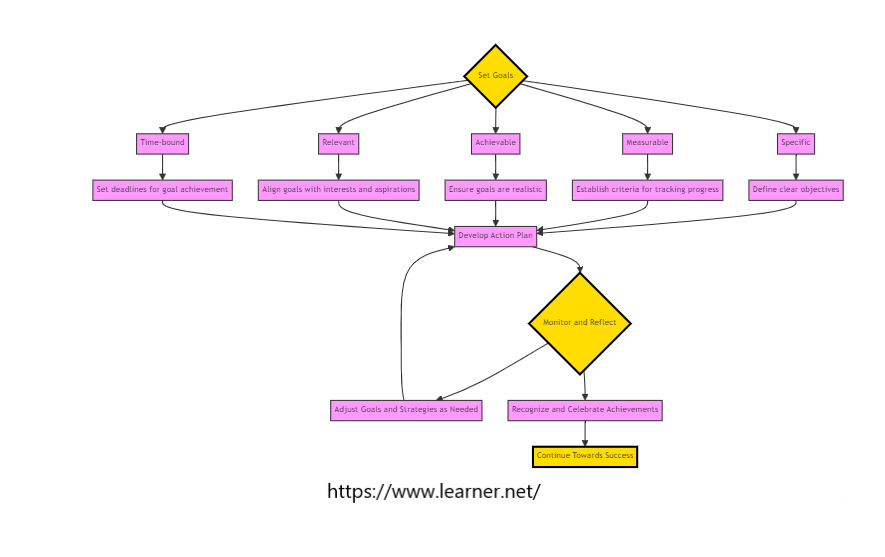The radical increase in distance learning and digital academies online can be attributed to several causes and recent events. One significant factor is the rapid advancement of technology, particularly the internet and digital communication tools. The proliferation of high-speed internet access and the widespread availability of devices such as computers, laptops, and smartphones have made it easier for individuals to access educational content remotely.
Moreover, the COVID-19 pandemic has played a pivotal role in accelerating the adoption of distance learning. School closures and social distancing measures forced educational institutions worldwide to transition to online platforms to ensure continuity of learning. This abrupt shift highlighted the importance of flexible and accessible educational options, further driving the demand for distance learning programs.
Additionally, the rising cost of traditional higher education has led many individuals to seek more affordable alternatives. Distance learning with sites like Learner Net offers the flexibility for a wide range of students to pursue education while also balancing work and personal commitments, making it an attractive option for those seeking to advance their careers or acquire new skills.
Distance learning has indeed opened the door to education for many individuals, providing opportunities that may have been otherwise inaccessible due to geographical constraints or time limitations. Online platforms offer a wide range of courses and degree programs, allowing learners to tailor their education to their specific needs and interests.
Furthermore, the convenience and flexibility of distance learning have contributed to its increasing popularity. Students can access course materials and lectures at their own pace and schedule, eliminating the need for physical attendance and allowing for a more personalized learning experience.
Despite its benefits, setting academic goals in online education is crucial for success. It is essential to establish realistic goals that align with one’s abilities, interests, and career aspirations. Setting goals helps individuals stay focused, motivated, and accountable throughout their educational journey.
To ensure that academic goals are attainable, it is important to follow the SMART criteria: Specific, Measurable, Achievable, Relevant, and Time-bound. By setting clear and actionable goals, students can track their progress and make necessary adjustments to stay on course.
Moreover, it is essential to approach goal-setting with a sense of pragmatism and realism. While it is important to aspire to academic excellence, it is equally important to recognize one’s limitations and challenges. Setting unrealistic goals can lead to frustration and disillusionment, ultimately hindering academic progress.
Distance learning has emerged as a viable and increasingly popular means of obtaining education, driven by technological advancements, societal changes, and the need for flexibility and accessibility. Setting academic goals in online education is paramount to success, but it is essential to approach goal-setting with pragmatism and realism. By establishing realistic and actionable goals, students can chart a path forward in their educational journey, ensuring that they are equipped with the knowledge and skills needed to thrive in an ever-changing world.
Understanding Academic Goals
To comprehend the meaning and purpose of academic goals, students must first grasp the concept of academic goals itself. Academic goals refer to specific objectives or targets that individuals set for themselves in their educational pursuits. These goals serve as guiding principles, directing students towards desired outcomes and shaping their academic journey. Academic goals can vary in nature and scope, encompassing both short-term and long-term aspirations.
Short-term academic goals are those that can be achieved within a relatively brief period, typically ranging from a few days to a semester. These goals often focus on immediate tasks or assignments, such as completing a research paper or mastering a particular concept. In contrast, long-term goals extend beyond immediate deadlines and encompass broader objectives that may take months or even years to accomplish. Examples of long-term goals include earning a degree, securing a job in a specific field, or pursuing further educational opportunities.
It is essential for students to ensure that their academic goals adhere to the SMART criteria, which stands for Specific, Measurable, Achievable, Relevant, and Time-bound as previously noted. Specific goals are clear and precise, leaving no room for ambiguity. Measurable goals can be quantified or evaluated objectively, allowing students to track their progress effectively.
Achievable goals are realistic and within reach, considering student abilities and resources. Relevant goals align with student interests, values, and long-term aspirations. Time-bound goals have a defined timeline or deadline, providing a sense of urgency and accountability.
Setting SMART goals is imperative for students in distance learning as it helps them maintain focus, motivation, and direction amid the challenges of remote education. By establishing clear and actionable goals, students can break down their academic journey into manageable steps, making progress towards larger objectives more attainable. Additionally, SMART goals facilitate effective time management and resource allocation, ensuring that students make efficient use of their limited time and energy.
The benefits of setting academic goals in distance learning are numerous. Academic goals provide students with a sense of purpose and direction, guiding their efforts towards meaningful outcomes. By setting clear objectives, students can stay motivated and engaged, even in the absence of direct supervision or external pressure.
Academic goals promote self-discipline and accountability, encouraging students to take ownership of their learning and progress. Academic goals also serve to foster a growth mindset, instilling in students the belief that they can improve and succeed through effort and perseverance. Finally, academic goals enhance students’ overall academic performance and satisfaction, leading to greater fulfillment and success in their educational endeavors.
Understanding the meaning and purpose of academic goals is essential for students in distance learning. By setting SMART goals that are specific, measurable, achievable, relevant, and time-bound, students can effectively navigate their academic journey and achieve desired outcomes. The benefits of setting academic goals in distance learning extend beyond academic success, empowering students to develop essential skills, cultivate a growth mindset, and maximize their potential for lifelong learning and success.
Assessing Personal Goals and Needs
Assessing personal goals and needs is a crucial first step for students embarking on their academic journey. The ongoing process of self-assessment plays a pivotal role in this process for both students and teachers, encompassing various aspects such as identifying strengths and weaknesses, understanding personal learning styles, defining individual priorities and aspirations, and setting realistic expectations.
Identifying strengths and weaknesses allows students to leverage their areas of proficiency while addressing areas that may require improvement. This self-awareness enables students to capitalize on their strengths to maximize academic success while actively working towards enhancing their weaker areas. Tools such as self-reflection, feedback from peers and instructors, and self-assessment quizzes can aid in this process.
Understanding personal learning style is equally essential as it influences how individuals perceive and process information. Visual, auditory, kinesthetic, and tactile are some common learning style archetypes, with each individual having a unique combination. By identifying their preferred learning style, students can tailor their study methods and techniques to optimize learning outcomes. For instance, visual learners may benefit from using diagrams, charts, and visual aids, while kinesthetic learners may prefer hands-on activities and experiential learning.
Defining personal priorities and aspirations involves clarifying what matters most to the individual in their academic and personal life. This includes identifying academic interests, career goals, extracurricular pursuits, and personal values. By aligning academic pursuits with personal passions and aspirations, students can foster a sense of purpose and motivation in their educational journey.
Setting realistic expectations is fundamental to ensure that academic goals are achievable and sustainable. It requires students to assess their abilities, resources, and limitations objectively. Realistic expectations take into account factors such as time constraints, competing priorities, and external responsibilities. By setting goals that are challenging yet attainable, students can maintain motivation and momentum in their academic endeavors.
In adhering to the SMART criteria for goal-setting, students can further enhance the effectiveness of their academic goals. Specific goals provide clarity and focus by outlining precisely what needs to be accomplished. Measurable goals allow students to track their progress and evaluate their success objectively.
Achievable goals ensure that students set realistic targets within their capabilities and resources. Relevant goals are aligned with students’ interests, values, and long-term aspirations. Time-bound goals provide a sense of urgency and accountability by establishing deadlines or timelines for completion.
Assessing personal goals and needs is a foundational step for students embarking on their academic journey. Through self-assessment, students can gain insight into their strengths, weaknesses, learning style, priorities, and aspirations.
By setting realistic expectations and adhering to the SMART criteria for goal-setting, students can create a roadmap for success that is both meaningful and achievable. Ultimately, self-awareness and goal-setting empower students to take ownership of their education and pursue their aspirations with clarity, purpose, and determination.
Defining SMART Goals
Establishing SMART goals is an essential aspect of academic success, particularly for online students who must navigate their educational journey independently. In order to accomplish this feat, it is necessary to have a firm grasp in order to ensure that the goals are also attainable, and that they can be measured to ensure continued academic success. SMART goals are specific, measurable, achievable, relevant, and time-bound, providing a clear framework for setting and attaining objectives.
- Specific: Specific goals are clear, concise, and well-defined. They answer the questions of who, what, when, where, why, and how. Specificity ensures that goals are focused and unambiguous, leaving no room for interpretation or confusion. For example, instead of setting a vague goal to “improve grades,” a specific goal would be to “achieve a B+ or higher in all online courses this semester.”
- Measurable: Measurable goals are quantifiable and can be tracked or evaluated objectively. They include concrete criteria for assessing progress and determining success. Measurability provides accountability and motivation by allowing students to monitor their performance and celebrate milestones. For instance, a measurable goal could be to “complete at least two online lectures and one reading assignment per week.”
- Achievable: Achievable goals are realistic and attainable within the constraints of resources, time, and abilities. They take into account current circumstances and limitations while stretching students to reach their full potential. Achievability ensures that goals are challenging yet within reach, preventing discouragement and frustration. An achievable goal might be to “earn a certificate in digital marketing within six months by dedicating at least 10 hours per week to coursework.”
- Relevant: Relevant goals are aligned with students’ interests, values, and long-term aspirations. They contribute to overall personal and academic growth by addressing meaningful objectives. Relevance ensures that goals are meaningful and impactful, motivating students to stay committed and engaged. A relevant goal for an aspiring software developer might be to “complete a coding bootcamp to acquire practical skills and industry-specific knowledge.”
- Time-bound: Time-bound goals have a defined timeline or deadline for completion. They create a sense of urgency and provide a framework for planning and prioritization. Time-bound goals prevent procrastination and encourage timely action by establishing clear expectations and deadlines. For example, a time-bound goal could be to “submit a draft of the research paper by the end of the month to allow time for revisions before the deadline.”
Setting SMART goals is essential for online students to achieve academic success. By following the SMART criteria – Specific, Measurable, Achievable, Relevant, and Time-bound – students can establish clear objectives that are focused, quantifiable, realistic, aligned with their aspirations, and time-sensitive. Examples of SMART academic goals for online students may include achieving a certain GPA, completing a specific number of courses within a semester, obtaining a professional certification, or developing specific skills relevant to their desired career path.
How to Create an Action Plan
Creating an action plan is essential for students to effectively achieve their academic goals and manage their time efficiently. A key component of this process involves breaking down goals into manageable tasks and prioritizing them based on importance and deadlines.
Breaking down goals into manageable tasks involves deconstructing larger objectives into smaller, actionable steps. This approach makes goals more attainable and less overwhelming, as students can focus on completing one task at a time. By breaking down goals into smaller components, students can track progress more effectively and maintain momentum towards their larger objectives.
Prioritizing tasks based on importance and deadlines is crucial for effective time management. Students should identify tasks that are urgent and important and tackle them first. Prioritization helps students allocate their time and resources wisely, ensuring that they address critical tasks before less pressing ones. By prioritizing tasks, students can prevent procrastination and avoid feeling overwhelmed by competing demands.
Utilizing time management techniques such as setting a schedule is instrumental in helping students stay organized and on track with their academic responsibilities. Setting a schedule involves allocating specific blocks of time for studying, completing assignments, attending lectures, and preparing for exams. By establishing a structured routine, students can maximize productivity and minimize distractions.
Avoiding procrastination is another essential time management technique that students should prioritize. Procrastination can derail progress and lead to increased stress and anxiety. Students can overcome procrastination by breaking tasks into smaller, more manageable chunks, setting deadlines for themselves, and creating a conducive study environment free from distractions.
Allocating time for studying, assignments, and exams is critical for maintaining academic success and managing workload effectively. Students should allocate sufficient time for studying and review sessions, completing assignments, and preparing for exams. By allocating dedicated time slots for academic tasks, students can ensure that they stay on top of their coursework and meet deadlines consistently.
Creating an action plan and implementing effective time management techniques are essential for students to succeed academically and manage their responsibilities efficiently. By breaking down goals into manageable tasks, prioritizing them based on importance and deadlines, and utilizing time management strategies such as setting a schedule, avoiding procrastination, and allocating time for studying, assignments, and exams, students can optimize their productivity and achieve their academic objectives.
Moreover, the skills acquired through creating an action plan and practicing time management techniques are invaluable and can benefit students not only in their academic pursuits but also throughout their lives, enabling them to effectively manage their time, set and achieve goals, and succeed in various endeavors.
Utilizing Available Resources and Support Systems
Utilizing the readily available resources is crucial for the academic success of online students, as it provides them with the necessary support and guidance to navigate their educational journey effectively. Identifying both readily available resources and those that may not be immediately obvious is essential for students to access comprehensive support systems.
Distance Learners studying online may quickly discover that there are some unexpected challenges when not being directly supervised or directed by their instructors, an occurrence not unlike that experienced by many people who find themselves working from home for the first time. This particular topic will also be addressed in more detail further along in this article where we will discuss overcoming challenges and staying motivated in-depth.
Online libraries and databases serve as invaluable resources for students seeking academic information and research materials. Platforms such as Google Scholar, JSTOR, and PubMed offer access to a vast array of scholarly articles, journals, and books. These resources enable students to conduct research, gather relevant information, and cite credible sources for their assignments and projects.
Academic advisors should also play a pivotal role in guiding students through their academic pursuits. They can provide personalized support, offer academic and career guidance, and assist students in developing academic plans that align with their goals and aspirations. By seeking guidance from academic advisors and their online tutors, students can receive valuable insights and recommendations tailored to their individual needs and circumstances.
Online forums and communities may also provide students with opportunities to connect with peers, share knowledge, and seek advice on academic-related topics. Platforms such as Reddit, Quora, and Discord host various online communities where students can engage in discussions, ask questions, and collaborate with fellow learners. Participating in online forums allows students to gain different perspectives, exchange ideas, and build a supportive network of peers.
Seeking support from peers, family, and mentors is essential for students to maintain motivation, overcome challenges, and stay focused on their academic goals. Peers can offer encouragement, share experiences, and provide emotional support during stressful periods. Family members can offer practical assistance, such as childcare or household chores, to alleviate students’ burdens and allow them to focus on their studies. Mentors, whether academic or professional, can offer valuable advice, guidance, and mentorship to help students navigate their academic and career paths.
Utilizing technology tools for organization and productivity is increasingly important for online students and distance learners. There are additional tools including AI virtual assistants, and others such as Siri, Google Assistant, and Amazon Alexa, can help students manage their schedules, set reminders, and access information quickly and efficiently.
Time management apps, such as Trello, Todoist, and Asana, enable students to create to-do lists, prioritize tasks, and track their progress towards goals. Note-taking software, such as Evernote, OneNote, and Notion, allows students to capture, organize, and review lecture notes, research findings, and study materials. Additionally, other tools like mind-mapping software and productivity extensions for web browsers can further enhance students’ organizational and productivity skills.
The importance of utilizing available resources cannot be overstated for online students and distance learners. By identifying both readily available resources and those that may not be immediately obvious, students can access comprehensive support systems to enhance their academic success. From online libraries and databases to academic advisors and online forums and communities, these resources offer valuable guidance, support, and opportunities for collaboration.
Seeking support from peers, family, and mentors can provide additional encouragement and assistance. Moreover, utilizing technology tools for organization and productivity can streamline academic tasks and enhance efficiency, enabling students to effectively manage their academic pursuits and succeed in their educational endeavors.
Diagram 1: SMART Goals Framework for Online Learning Success

Monitoring Progress and Making Adjustments
Continuously monitoring SMART goals and progress is essential for students to stay on track and adapt to changing circumstances throughout their academic journey. Regularly tracking progress towards goals allows students to assess their performance, identify areas for improvement, and make necessary adjustments to their action plans.
Reflection on successes and challenges is integral to the goal-setting process as it provides valuable insights into what strategies are working well and what areas may need refinement or even an entirely different approach. By reflecting on successes, students can identify their strengths and leverage them to achieve further success. Similarly, reflecting on challenges enables students to learn from setbacks, develop resilience, and refine their approach to goal attainment.
Modifying goals and action plans as needed is essential for students to stay flexible and responsive to evolving priorities and circumstances. As students progress through their academic journey, they may encounter new opportunities, obstacles, or changes in personal circumstances that necessitate adjustments to their goals. By being open to modification, students can ensure that their goals remain relevant, achievable, and aligned with their aspirations.
Celebrating achievements and milestones serves as a powerful motivator and reinforces positive behaviors. Recognizing and acknowledging progress, no matter how small, helps students stay motivated, build confidence, and maintain momentum towards their goals. Celebrating achievements can take various forms, such as treating oneself to a reward, sharing accomplishments with peers or mentors, or simply taking a moment to reflect and appreciate the journey.
Monitoring SMART goals and progress, reflecting on successes and challenges, modifying goals and action plans as needed, and celebrating achievements are essential components of the goal-setting process for students. By adopting a proactive and reflective approach to goal attainment, students can navigate their academic journey with clarity, purpose, and resilience, ultimately achieving their desired outcomes and realizing their full potential.
Student Challenges and the Importance of Staying Motivated
Distance learning presents several challenges that are akin to those faced by remote employees, particularly in the realm of time management, feelings of isolation or disconnection, and common technical difficulties.
Time management issues are prevalent in distance learning and remote work settings alike. Students and remote employees must juggle multiple responsibilities and deadlines while working independently and managing their schedules autonomously. Without the structure of traditional classroom or office environments, individuals may struggle to prioritize tasks, allocate time effectively, and maintain a healthy work-life balance.
Procrastination, distractions, and difficulty staying motivated are common time management challenges that can impede productivity and hinder academic or professional success.
Feelings of isolation or disconnection are another common challenge in distance learning and remote work environments. Without the physical presence of classmates, colleagues, or instructors, students and remote employees may experience a sense of loneliness, detachment, or alienation.
Limited social interaction and reduced opportunities for face-to-face communication can exacerbate feelings of isolation, leading to decreased morale, motivation, and engagement. Moreover, the absence of in-person support networks and interpersonal relationships may contribute to a lack of sense of belonging and hinder collaboration and teamwork.
Common technical difficulties represent a significant obstacle in both distance learning and remote work scenarios. Reliance on technology for communication, collaboration, and access to educational resources or work-related tools means that technical issues such as internet connectivity problems, software glitches, hardware malfunctions, and compatibility issues can disrupt workflow and impede progress. Moreover, the need to troubleshoot technical problems independently or remotely can be time-consuming, frustrating, and disruptive to the learning or work process.
Distance learning and remote work share common challenges, including time management issues, feelings of isolation or disconnection, and common technical difficulties. Addressing these challenges requires proactive strategies such as implementing effective time management techniques, fostering virtual communities and support networks, and troubleshooting technical issues promptly and efficiently.
By recognizing and addressing these challenges, students and remote employees can overcome obstacles, enhance productivity, and achieve success in their academic and professional endeavors.
Strategies for Overcoming Challenges
To overcome challenges common to both distance learners and remote workers, developing effective strategies is essential. Seeking help when needed is a proactive approach that empowers individuals to overcome obstacles and navigate challenges effectively. Whether seeking assistance from instructors, colleagues, or technical support professionals, asking for help allows individuals to access valuable resources, guidance, and expertise to address issues and find solutions.
Maintaining a positive mindset is also crucial for resilience and motivation in the face of adversity. Adopting a growth mindset, characterized by optimism, flexibility, and a belief in one’s ability to learn and grow, enables individuals to approach challenges with resilience and determination. This is of course true when the individual can celebrate the achievement of even small successes and accomplishments, but it is equally important to recognize that there will also be failures along the way.
By reframing setbacks as opportunities for growth and viewing challenges as temporary obstacles, individuals can maintain a positive outlook and persevere in their academic or professional pursuits.
Establishing a support network is instrumental in providing encouragement, advice, and emotional support to individuals facing challenges. Building connections with peers, mentors, and like-minded individuals creates a sense of community and belonging. A support network offers opportunities for collaboration, feedback, and mutual encouragement, fostering a supportive environment conducive to personal and professional growth.
Finding inspiration and staying focused on long-term objectives is essential for maintaining motivation and momentum towards goals. Setting clear, meaningful goals and visualizing success can fuel motivation and commitment. By staying connected to their purpose and values, individuals can overcome short-term setbacks and stay focused on their long-term aspirations. Regularly revisiting goals, celebrating progress, and savoring achievements can reignite inspiration and reinforce commitment to achieving desired outcomes.
Overcoming challenges common to distance learners and remote workers requires the development of effective strategies such as seeking help when needed, maintaining a positive mindset, establishing a support network, finding inspiration, and staying focused on long-term objectives. By adopting proactive approaches, leveraging support systems, and nurturing a resilient mindset, individuals can navigate challenges with confidence and perseverance, ultimately achieving their academic and professional goals.
Do SMART Goals Really Make a Meaningful Difference in Online Education
Setting and achieving academic goals in distance learning is vital for online students to unlock their full potential and succeed in their educational endeavors. By establishing clear and measurable goals, students can stay focused, motivated, and accountable for their academic progress. Moreover, achieving these goals can lead to a sense of accomplishment, personal growth, and enhanced self-confidence.
Taking proactive steps towards academic success is essential for online students to maximize their learning experience and achieve their desired outcomes. This includes developing effective study habits, utilizing available resources, seeking support when needed, and maintaining a positive mindset. By taking ownership of their learning journey and actively engaging in their coursework, students can overcome challenges, stay on track, and realize their academic aspirations.
Perseverance and determination will continue to play a pivotal role in reaching educational milestones and overcoming obstacles along the path of life. In the face of adversity or setbacks, students must remain resilient, adaptable, and committed to their goals. By cultivating perseverance, students can navigate challenges with resilience and continue moving forward despite obstacles or setbacks.
Successfully achieving academic goals brings a sense of satisfaction and fulfillment that extends beyond the classroom. It represents a tangible accomplishment and a testament to one’s dedication, hard work, and perseverance. Moreover, the skills and competencies acquired through the process of setting and achieving academic goals, such as time management, critical thinking, and problem-solving, are transferable and applicable to various aspects of life and career.
Setting and achieving academic goals in distance learning is a fundamental aspect of online education that empowers students to pursue their passions, fulfill their potential, and unlock opportunities for personal and professional growth.
By taking proactive steps, maintaining perseverance, and celebrating achievements, students can enjoy success not only in the academic realm but also in their future endeavors, allowing them to thrive and make meaningful contributions to society long after their formal education has concluded and the school bell has sounded for the last time.








There are no reviews yet.